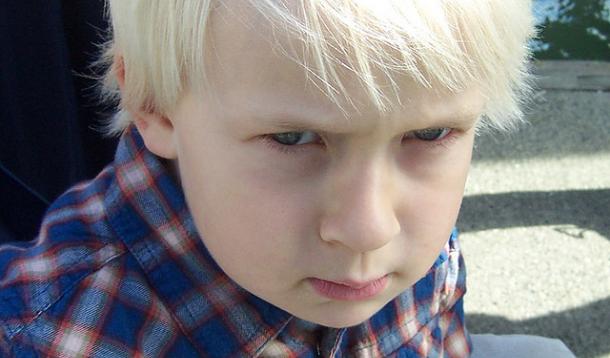
Here is the second installment in my series about tantrums/meltdowns.
Last week I posted the questions I ask parents to consider when their children are having lots of tantrums. This week's topic is how to de-escalate a tantrum.
Even if you have filled your child's attachment tank and have made sure to avoid situations that might compromise your child (hungry, tired, over-stimulated, overwhelmed), tantrums happen. This is normal.
Here are suggestions to try preventing tantrums from escalating while protecting the secure attachment you have built with your child.
Acknowledge that your child is angry—that alone might stop the tantrum! Before you give instructions or set a limit ("Connect first, instructions second"), put your commentator voice on and state what you see. For example, if you have cut the toast the wrong way, which I did yesterday, say what you see, "OH NO! You wanted me to cut the toast into squares not triangles. I made a mistake." Try to get a nod... "I did the wrong thing." After the nod, then you can set the limit, "It isn't okay to waste food, so your choice is to eat this now or a little later. Would you like to have your apple slices first?"
If you see that look in his eye that makes you want to lunge for the toast because you expect it to be sailing across the room, do an empathy statement like this, "You are mad. Having squares isn't what you want." If he hears this and is able to reel himself in, scoop him into a hug.
When anyone gets angry, please remember that anger is an "icing" emotion — it is a defence against more uncomfortable feelings inside (the cake) like vulnerability, sadness, fear, and hurt. If you can help your child shift back into the deeper feeling, the tantrum likely won't happen.
Try using more empathy like this, "You wish you had triangle toast. You are mad at Mommy." If your child is in the cake, tears will flow. Gordon Neufeld, PhD calls this "getting to futility." Your child has realized that the toast is not going to be cut into squares and connects with how sad he is that his preference didn't happen.
That is why it is so important to not try to "fix" your child's tantrum once it starts. Getting to futility is an important skill. This is where acceptance grows. If we prevent our child from reaching that point where he just will not get what he wants, he won't learn how to accept struggles and move forward.
You know your child has made it to futility when he crumples into a sobbing ball. This is the eventual state after the rage is done. If you skip this state by offering a bribe like toys, treats or electronics to get the tantrum to stop, you are not allowing your child to grow the skill of futility.
If you have done everything to connect, prevent a compromised state, used limits and empathy and a tantrum still happens, maybe your child just needs a good meltdown to clear his subconscious mind. Think of the tantrum as something that is helping your child, and not hurting you.
If he has gone past the point of tantrum no return, go into tantrum tolerance mode, which is what I will discuss next week. To be continued...
(If you have any questions, feel free to post them here or on my facebook page)
Photo from flickr creative commons Gerry T

I recently asked the parents on my Facebook page to share their biggest challenges. Many parents explained that tantrums and the crazy-making behaviour of young children was the hardest thing for them right now. Yes, I too have cut "the wrong end of the freezie" so I understand what crazy-making means!
To address this, I am going to create a series of posts about tantrums/ wild behaviour and how to get through them reasonably intact. Today, I am providing a list of some the questions I ask parents when they come see me in my psychotherapy practice for help with multiple tantrums over many days.
As you read these questions, pay attention to which ones "resonate" — draws an emotional reaction or makes you pause and really start thinking.
First, have you used tantrum-prevention manoeuvres?
Is your child compromised? Tired, hungry, over-stimulated?
Is your child's attachment tank empty?
Is there a lack of routines?
Is bedtime not happening early enough?
Is your child adequately being warned when it is transition time?
Have you checked your child's temperature—does he/she have a fever? Or maybe a cold/flu is on its way? (There have been at least three times when I was surprised at my son's constant meltdowns, only to realize hours later that he had a fever.)
Is the child getting to "futility?" This is when a tantrum is allowed to finish—the child goes through anger, but then realizes whatever he/ she wants just isn't going to happen so the shift to acceptance and sadness is made. If children miss this shift and are continually distracted out of their tantrums by electronics, treats, toys they may not develop the skill of accepting they will not get their way, which is necessary for safety, health, learning, scheduling, brain growth, etc.
Next, ask yourself these assessment questions:
Is there something happening in my child's life that hurts him?
What can I do to help myself?
Am I being scary or hurtful? Or a nag?
Am I too stressed out?
Am I spending too much time away from my child?
Am I not giving my child any power? *Choices — Am I too bossy? (There is a difference between being a leader and being bossy.)
Is he grieving the loss of something?
Is there another adult in his life that is being rude/scary/harsh? — babysitter? daycare? teacher? partner?
Often tantrums are a child's sideways attempt at communication. Being a detective to see what the child might be trying to say can help reduce the frequency and intensity of emotional outbursts.
To be continued...
photo: flickr creative commons — mdanys

I usually have my parenting educator hat on but today I wanted to share a project I did with my boys that served many wonderful purposes. We had fun, got closer, were creative together, provided a personalized gift for many people, and saved money!
I am sharing this now because it is a wonderful holiday gift idea, but depending how involved you want to make it, you will need lots of time to go through all the steps. It took us two months from start to printed product in our hands. (Although you could do it faster than us)
The project is to create your own children's book!
I do have many of years of writing under my belt but anyone can do this project. You can decide how far you would like to take it from a simple story that has short sentences to a lengthier chapter book, depending on the age of your children.
This is what we did:
One day my son started talking about all the animals that either lived or passed through our backyard one summer: a skunk, squirrels, cats, groundhogs, racoons (a family of four at the time), a chipmunk, and a family of cardinals. We do actually live in the middle of a city!
We started making stories about all the animals and early one evening, I spotted the racoon babies splayed out on our neighbour's roof while I was walking around with the hose. I decided to spray them--it was a scorcher of a day in the middle of a dry spell. My boys and I talked about how the racoons must have been confused about where the water came from. A story was born!
We got out paper and made a list of all the characters we wanted in the story, then I let the boys who were five and three at the time name them all. "Avaseeya" the skunk is our favourite!
I said, "Okay, we need to come up with some plot points--that means we need to decide what is going to happen in this story." The boys came up with wonderful ideas: that they would fall in our little wading pool, that the skunk would "poof" his friends by accident, that the animals would see the "people" (us) dancing around in the kitchen, as we do, and try to imitate us.
We also talked about the type of story they wanted--they picked a mystery. Then I asked them to describe where the animals live and what they eat to establish the setting. After the book skeleton was formed with characters, plot and setting, we played around with words to describe how they would look, walk and talk. FUN!
Once a chapter was written, I would read it out loud to the kids and they would offer suggestions. The changes my boys wanted always made the story funnier! After five chapters, we decided our mystery of the falling water on a cloud-less day was complete. We felt other kids would like to read this book so we decided to format the pages and have it printed. I just measured a book size that I liked and entered those amounts into the "Size" tab of "Page Layout" in Microsoft Word.
I tried to make a cover but decided to enlist the services of an illustrator that I know. You could easily use photographs, have the kids draw pictures and scan them, or find a graphic designer student/ professional to help.
I called a print company and found out it would cost $5 to print each one so we decided to invest in 100 copies. We have since given them to all the cousins at Christmas and every single friend of each of my sons has received one over the last two school years at birthday parties. That's 100 people we would have spent $20-25 on so instead of spending $2,500 (WOW--those birthdays add up!), we have spent $500.
My sons are very pleased to "sign" the books and address them to their friends, and we have heard from the book recipients that they were very happy to receive the book and loved the story. We also donated a copy to the school library.
This project was a little bit of work on my part, and a lot of fun for my children and I. When I see how excited the boys are to show their teachers or friends the book, I feel glad to have made the effort. (I also really like saving $2,000!)
Please do let me know if you have any questions by posting them in the comments or on my facebook page. The photo above is a picture of our book.